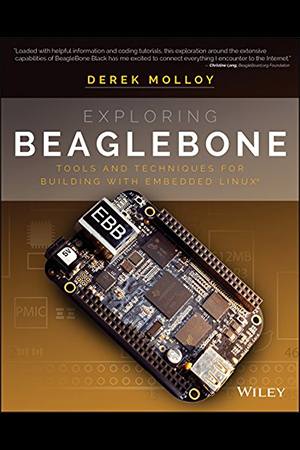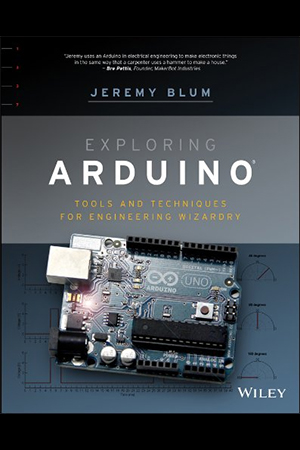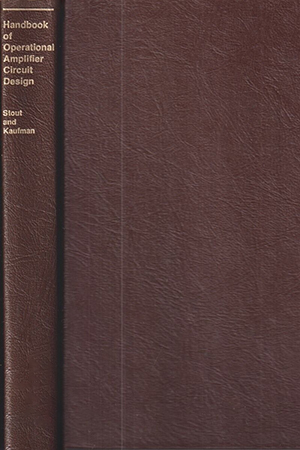
Title: Exploring Raspberry Pi: Interfacing to the Real World with Embedded Linux
Published by: Wiley
Release Date: June 13, 2016
Contributors: Derek Molloy (Author)
Genre: Engineering
Pages: 720
ISBN13: 978-1119188681
Exploring Raspberry Pi is the innovators guide to bringing Raspberry Pi to life. This book favors engineering principles over a 'recipe' approach to give you the skills you need to design and build your own projects. You'll understand the fundamental principles in a way that transfers to any type of electronics, electronic modules, or external peripherals, using a "learning by doing" approach that caters to both beginners and experts. The book begins with basic Linux and programming skills, and helps you stock your inventory with common parts and supplies. Next, you'll learn how to make parts work together to achieve the goals of your project, no matter what type of components you use. The companion website provides a full repository that structures all of the code and scripts, along with links to video tutorials and supplementary content that takes you deeper into your project.
The Raspberry Pi's most famous feature is its adaptability. It can be used for thousands of electronic applications, and using the Linux OS expands the functionality even more. This book helps you get the most from your Raspberry Pi, but it also gives you the fundamental engineering skills you need to incorporate any electronics into any project.
Develop the Linux and programming skills you need to build basic applications
Build your inventory of parts so you can always "make it work"
Understand interfacing, controlling, and communicating with almost any component
Explore advanced applications with video, audio, real-world interactions, and more
From the Inside Flap
"Exploring Raspberry Pi is THE book to go to if you are interested in learning about the impressive physical computing capabilities of the Raspberry Pi platform. Derek Molloy imparts the electronics, programming, and embedded Linux skills that are vital to today's innovators in building the next generation of Internet of Things applications.".
— Eben Upton, Co-creator of the Raspberry Pi
BUILD THE SKILLS YOU NEED TO INNOVATE
Economical and versatile, the Raspberry Pi can be adapted for thousands of applications. Open up all its possibilities by applying engineering principles along with Linux programming techniques, and develop the skills you need to design and build an endless array of projects.
Exploring Raspberry Pi first covers the basics of the hardware platform, recommended accessories, software, embedded Linux systems, and Linux programming techniques. Then it takes you deeper into interfacing, controlling, and communicating, with detailed information about Raspberry Pi GPIOs, buses, UART devices, and USB peripherals. You will learn to configure a cross-compilation environment in order to build large-scale software applications, as well as how to combine hardware and software to enable the Raspberry Pi to interact effectively with its physical environment. Finally, you'll discover how to use the Raspberry Pi for advanced interfacing and interaction applications such as the Internet of Things (IoT); wireless communication and control; rich user interfaces; images, video, and audio; and Linux kernel programming.
Instead of recipes for a few specific projects, Exploring Raspberry Pi arms you with the skills needed to build the projects that exist in your imagination. You'll learn to:
Develop essential Linux and programming skills
Build Internet of Things (IoT) applications
Master interfacing, controlling, and communication
Design applications that interact with the physical environment
Utilize the Arduino platform as a service processor
Build wireless communication applications
Write and install a custom Linux loadable kernel module
Apply the Raspberry Pi 3 and Raspberry Pi Zero to your projects
Visit the companion website at www.exploringrpi.com
From the Back Cover
"Exploring Raspberry Pi is THE book to go to if you are interested in learning about the impressive physical computing capabilities of the Raspberry Pi platform. Derek Molloy imparts the electronics, programming, and embedded Linux skills that are vital to today's innovators in building the next generation of Internet of Things applications.".
Eben Upton, Co-creator of the Raspberry Pi
BUILD THE SKILLS YOU NEED TO INNOVATE
Economical and versatile, the Raspberry Pi can be adapted for thousands of applications. Open up all its possibilities by applying engineering principles along with Linux programming techniques, and develop the skills you need to design and build an endless array of projects.
Exploring Raspberry Pi first covers the basics of the hardware platform, recommended accessories, software, embedded Linux systems, and Linux programming techniques. Then it takes you deeper into interfacing, controlling, and communicating, with detailed information about Raspberry Pi GPIOs, buses, UART devices, and USB peripherals. You will learn to configure a cross-compilation environment in order to build large-scale software applications, as well as how to combine hardware and software to enable the Raspberry Pi to interact effectively with its physical environment. Finally, you'll discover how to use the Raspberry Pi for advanced interfacing and interaction applications such as the Internet of Things (IoT); wireless communication and control; rich user interfaces; images, video, and audio; and Linux kernel programming.
Instead of recipes for a few specific projects, Exploring Raspberry Pi arms you with the skills needed to build the projects that exist in your imagination. You'll learn to:
Develop essential Linux and programming skills
Build Internet of Things (IoT) applications
Master interfacing, controlling, and communication
Design applications that interact with the physical environment
Utilize the Arduino platform as a service processor
Build wireless communication applications
Write and install a custom Linux loadable kernel module
Apply the Raspberry Pi 3 and Raspberry Pi Zero to your projects
Visit the companion website at www.exploringrpi.com
About the Author
DR. DEREK MOLLOY is a senior lecturer at the School of Electronic Engineering, Faculty of Engineering and Computing, Dublin City University, Ireland. He is also the author of the hugely popular book on the BeagleBone platform titled Exploring BeagleBone, also published by Wiley. His popular YouTube video series has introduced millions of people to embedded Linux and digital electronics topics. He has received several awards for teaching and learning, including the 2012 Irish Learning Technology Association (ILTA) national award for Innovation in Teaching and Learning. The same year, he was also awarded the Dublin City University President's Award for Excellence in Teaching and Learning.



















